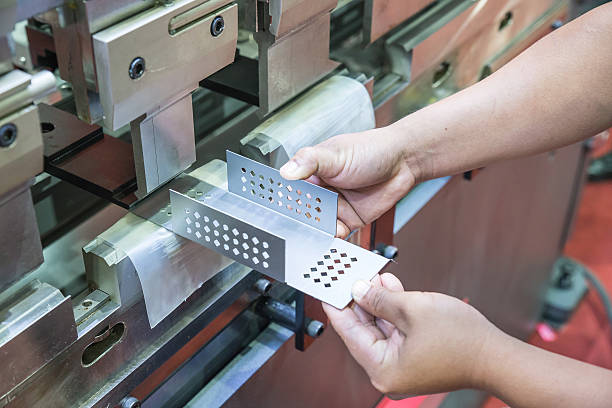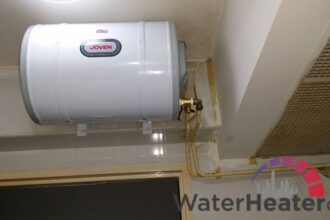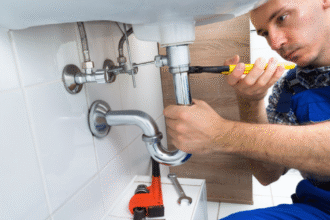Across construction, heavy machinery, aviation, and even electronics, industries are evolving and expanding in focus. At the center of this development are custom metal brackets which are extremely important for the structural integrity, design flexibility, and performance functionality of any system. Custom brackets may appear basic, but they are of great importance in modern engineering systems. Brackets functionality relies heavily on a sophisticated sheet metal production process that ensures precision, durability, and scalability.
This article looks closer at how custom metal brackets improve structural design, ways to fabricate them, and the recently growing need for tailored brackets in B2B projects.
The Role of Custom Metal Brackets In Structural Systems
Support brackets serve to connect, secure or reinforce various structural branches. Custom made brackets get the job done unlike the “off-the-shelf” versions. Custom metal brackets are made to specifications with regard to load, space, and geometric configuration.
Applications for this technology include the following:
- Load Bearing Reinforcement – This application augments the construction framework’s ability to bear loads.
- Component Mounting – This application is used for mounting components in cars and airplanes.
- Enclosure Support – This application is used in electrical panels and HVAC systems, where enclosures need support.
- Mechanical Stabilization – This includes various automation machinery used in industries.
The integration of various mechanical loads is supported because absolute failure is avoided. It can be noted that practical limits are maintained if failure is avoided, which gives one the ability to create and develop designs optimally. Therefore, there is also cost efficiency with these brackets. The design and development of these brackets helps in ignoring the environment as the objectives are achieved within the creation of the bracket confident of success based on the environment. Also, with a purpose provides reliability during dynamic exposure to environmental stress.
How Customization is Optimized for Sheet Metal Production
Brackets have a very specific shape and design purpose which ensures that the structural components are optimally designed fulfilling the gap in customer demand with revolution in technology integrated in sheet metal production. The customization enables quicker results allowing faster goal accomplishment based on company needs.
The brackets can be easily produced due to prototype or mass brackets constructions both being efficiently achievable framed under custom precision standards. This consequently increases performance and efficiency in prototypes of sheet metals.
The production and assembly enable versatile results with the following steps:
- Material Selection – The bracket can be made of aluminum, carbon, stainless steel, or even other special alloys based on the estimations of all the conditions.
- Cutting – Plasma, water jet, and laser cutting enable achievement of high precision giving the constructors the chance to achieve desired edges and profiles.
- Forming and Bending – Dimensional compliance is ensured while creating press brakes and folding machines too.
- Joining and Fastening – For incorporation with larger constructions, with the help of rivets and welding or even threaded inserts these brackets can be adopted.
- Surface Finishing: The durability and corrosion resistance are enhanced with coatings such as powder coating, anodizing, or galvanizing.
Custom geometries and the production-ready status of parts with minimal secondary processing enables B2B companies to take advantage of rapid iteration throughout the sheet metal production process.
Improving Structural Performance and Beauty
The correct design of custom metal brackets adds to form while serving a functional purpose. The use of non-standard angles, multi-material connections, and concealed support features enable greater design freedom for engineers and architects, making the use of non-standard their primary use.
Increased load bearing capability:
- Load Distribution: Specially tailored shapes facilitate larger surface areas which results in a lower stress concentration.
- Material Savings: Stronger and lighter parts are made with optimization of geometry during the design phase which reduces material waste.
- Vibration Resistance: The life of the equipment is extended with the custom configurations which help dampen mechanical vibration.
- Design: Complementing high-end industrial and commercial projects, low-profile brackets create a cleaner appearance to the design.
This performs benefits especially to Architecture, Automotive, and Robotics industries, where mechanical performance, precision, safety, and design constraints must harmonize.
Integration with Advanced Manufacturing and Automation
One of the most impactful changes in recent years is the merging of smart manufacturing systems with custom metal bracket production. This advancement dramatically enhances the capability of producing custom metal brackets efficiently and at scale.
Key enablers include:
- CAD CAM Integration: The automation of translating 3D drawings into actionable machine instructions accurately and ready for machining significantly reduces manual errors and lead time.
- Laser-Guided Bending System: These guarantee precision in complicated multi-bend brackets with very little operator intervention.
- Robotic Welding and Assembly: These systems provide precision and uniformity, which is crucial for bulk production.
This degree of automation in manufacturing enables B2B businesses to respect JIT (just-in-time) inventory models, ensure agile responses to design alterations, and alleviate supply chain logjam points.
Quality Control and Compliance in Custom Fabrication
With structural components, custom brackets must meet quality assurance standards which include precision regarding measurements, materials, and mechanical performance as set by industry regulations and customer needs.
Standard practices for maintaining quality include but are not limited to:
- Quality Control of Engineering Works: Checking work against set benchmarks using CMMs, laser scanning, and digital gauging.
- Material Certification: Verification and validation concerning the mechanical and chemical properties of stock metal.
- Load Testing: Helps verify bracket performance under stress using simulated load conditions.
- Surface Finish Evaluation: Makes sure coatings meet specifications for adhesion, thickness, and resistance.
Quality control is reflected in a fabricator’s ISO 9001, AS9100 (aerospace), or IATF 16949 (automotive) compliance certifications.
For regulated B2B clients, working with a qualified metal fabricator ensures project traceability, reliability, and peace of mind—invaluable risk factors critical to project success.
B2B Advantages of Custom Bracket Solutions
Focusing on custom metal brackets allows fabricators to work strategically with B2B clients. These solutions strategically enable organizations to:
- Optimize Supply Chains: Decrease the number of part numbers and simplify inventory.
- Foresee Assembly Acceleration: Modification on-site is greatly reduced with custom brackets.
- Enhance Equipment Longevity: Fit and function designed parts minimize wear over time.
- Alter Product Design: Greater design amplification and functionality allows customized mounting systems.
- Achieve Improved ROI on Projects: Financial benefits stem from decreased rework, better performance, and easier integration.
B2B buyers from industrial automation, renewable energy, and heavy equipment manufacturing are consistently served by custom approaches designed for precision and scale.
Conclusion
In modern construction, custom metal brackets are no longer mere appendages, but rather, they integrate strength, flexibility, and efficiency as a core part of the structure. This is possible because of today’s sophisticated capabilities in sheet metal production, which offers rapid, precise, and reliable turnarounds on bespoke parts at scale.
For B2B companies, custom bracket solutions represent a structural product enhancement, but in reality stands for custom tailored bracket products that sustain innovation alongside structural integrity and sustained operational excellence.
Companies can work with experienced fabrication providers who specialize in uncovering the intersections of engineering and production, and drive new outcomes in design performance and cost efficiency. The importance placed on custom engineering solutions will grow, and so will the golden opportunity provided by high-precision, custom-fabricated brackets within industrial engineering.

















